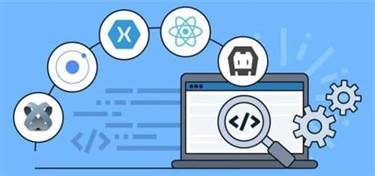Another error to be aware of is using the wrong type of pointer. For example, if you declare a pointer to an integer but then try to dereference it as a pointer to a character, you may get unexpected results or errors. Each element of the array can point to a separate integer variable. One of the most powerful uses of pointers in C is for dynamic memory allocation.

In this case, a more complex scheme such as memory segmentation or paging is employed to use different parts of the memory at different times. The last incarnations of the x86 architecture support up to 36 bits of physical memory addresses, which were mapped to the 32-bit linear address space through the PAE paging mechanism. Thus, only 1/16 of the possible total memory may be accessed What is pointer at a time. In the usual case, a pointer is large enough to hold more addresses than there are units of memory in the system. The first case may, in certain platforms such as the Intel x86 architecture, be called a segmentation fault . The second case is possible in the current implementation of AMD64, where pointers are 64 bit long and addresses only extend to 48 bits.
Pointer Arithmetic
4Passing pointers to functions in CPassing an argument by reference or by address enable the passed argument to be changed in the calling function by the called function. Some C programming tasks are performed more easily with pointers, and other tasks, such as dynamic memory allocation, cannot be performed without using pointers. So it becomes necessary to learn pointers to become a perfect C programmer.

Note that here foo is a pointer and contains the value 1702, and not ‘h’, nor “hello”, although 1702 indeed is the address of both of these. This way, each cell can be easily located in the memory by means of its unique address. Try it now It only takes a few minutes to setup and you can cancel any time. Here’s an example of pointer syntax beginners often find confusing. If an incorrect value is provided to a pointer, it may cause memory corruption.
C++ Pointer To Pointer (Double Pointer)
These single-byte memory cells are ordered in a way that allows data representations larger than one byte to occupy memory cells that have consecutive addresses. They are used in data structures to directly manipulate the address of the nodes without copying. They are used in the dynamic memory allocation of multidimensional arrays.
They enable programs to simulate call-by-reference as well as to create and manipulate dynamic data structures. Iterating over elements in arrays or other data structures is one of https://www.globalcloudteam.com/ the main use of pointers. Pointer arithmetic can be simulated by adding or subtracting from the index, with minimal additional overhead compared to genuine pointer arithmetic.
Learn About Credit Cards
MSC Cruises doesn’t offer a chart showing which tier of its loyalty program you will receive based on your tier at each of the other brands. Our staff members at TPG have had luck matching into the top Gold or Diamond tiers of the MSC Voyagers Club program from high levels of competing programs. One TPG editor received top Diamond tier status in the MSC Cruises program as a match to World of Hyatt Globalist status, for instance.

Neither p nor q point to addresses known to contain a value, but none of the above statements causes an error. In C++, pointers are allowed to take any address value, no matter whether there actually is something at that address or not. What can cause an error is to dereference such a pointer (i.e., actually accessing the value they point to).
Changing Value Pointed by Pointers
Null Pointers are those pointers that do not point to any memory location. They can be created by assigning a NULL value to the pointer. The pointer declared here will point to some random memory address as it is not initialized.
- A pointer which points to another pointer is known as double pointer.
- They have to be first transformed into some other pointer type that points to a concrete data type before being dereferenced.
- Members under the age of 18 must be accompanied in order to take advantage of the perk.
- This is useful if the programmer wants a function’s modifications to a parameter to be visible to the function’s caller.
- It is possible to simulate pointer behavior using an index to an (normally one-dimensional) array.
The above syntax is used to define a pointer to a variable. We can also define pointers to functions, structures, etc. The Eiffel object-oriented language employs value and reference semantics without pointer arithmetic. They offer pointer arithmetic, typecasting, explicit memory management, interfacing with non-Eiffel software, and other features. Extended versions of COBOL also provide pointer variables declared with USAGE IS POINTER clauses.
Example 3: Changing Value Pointed by Pointers
With practice and patience, you can master pointers and use them to manipulate memory and work with complex data structures. First, we declared an integer variable x and a pointer p that points to x. We called the increment function, passing in the p pointer. The increment function modifies the value of x by incrementing it by one. We then printed the value of x before and after the function call to demonstrate that x has been incremented.

Ada is a strongly typed language where all pointers are typed and only safe type conversions are permitted. All pointers are by default initialized to null, and any attempt to access data through a null pointer causes an exception to be raised. To achieve this, the binary code can initially be loaded into contiguous bytes of the array for the simulator to “read”, interpret and action entirely within the memory contained of the same array. If necessary, to completely avoid buffer overflow problems, bounds checking can usually be actioned for the compiler .
How to Use Pointers?
One usage for it is often when an object can be moved in memory or removed. One is often responsible to lock and unlock the usage of the object so it will not be moved when accessing it. There are still fewer ways to evade the type system and so Oberon and its variants are still safer with respect to pointers than Modula-2 or its variants. As with Modula-3, garbage collection is a part of the language specification.